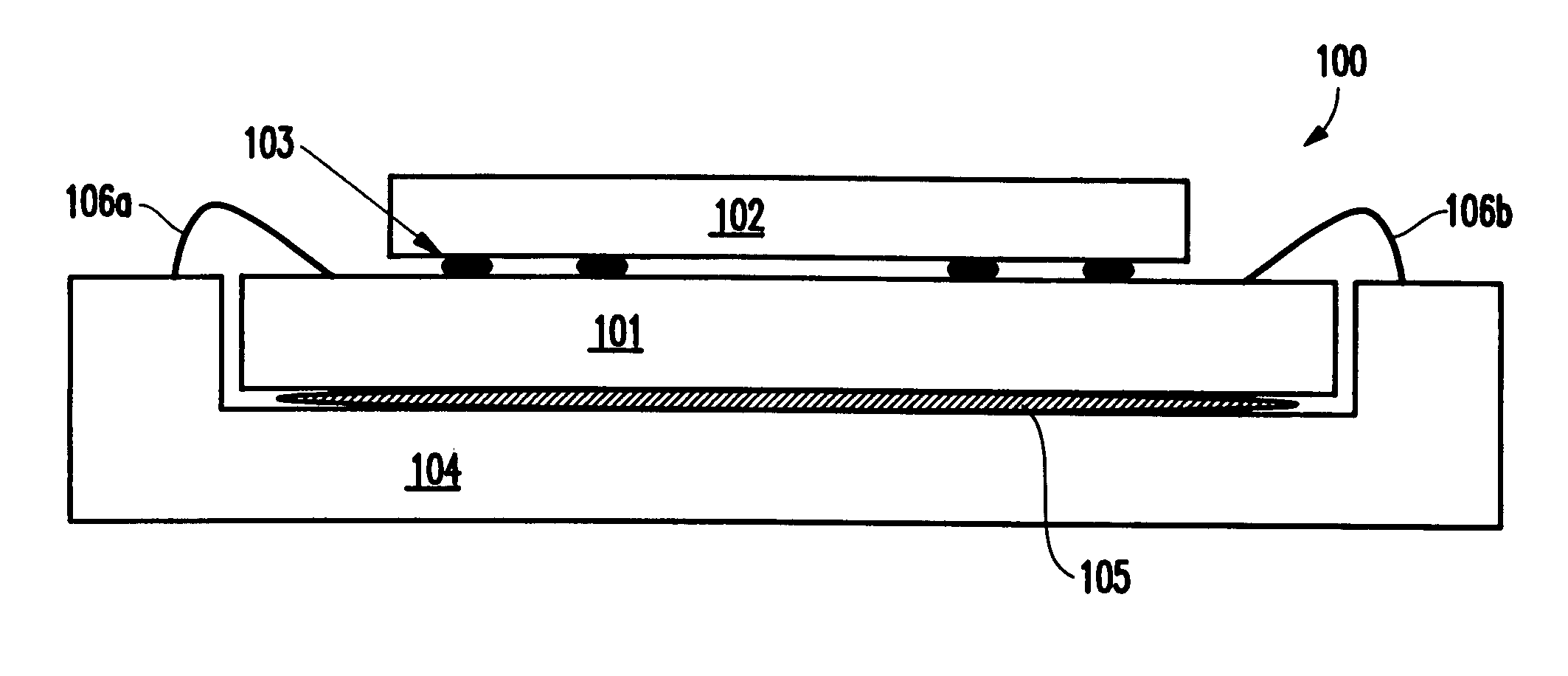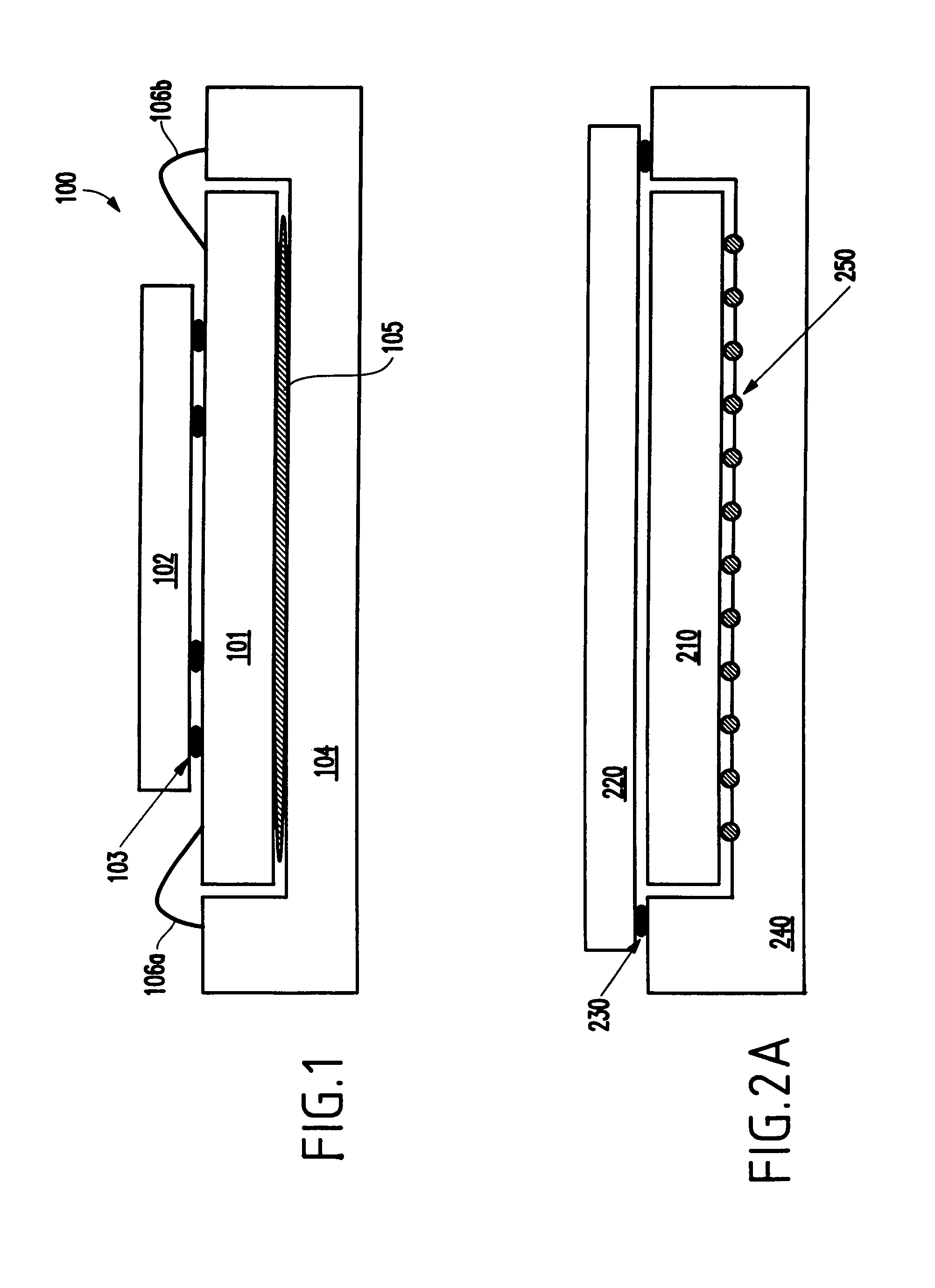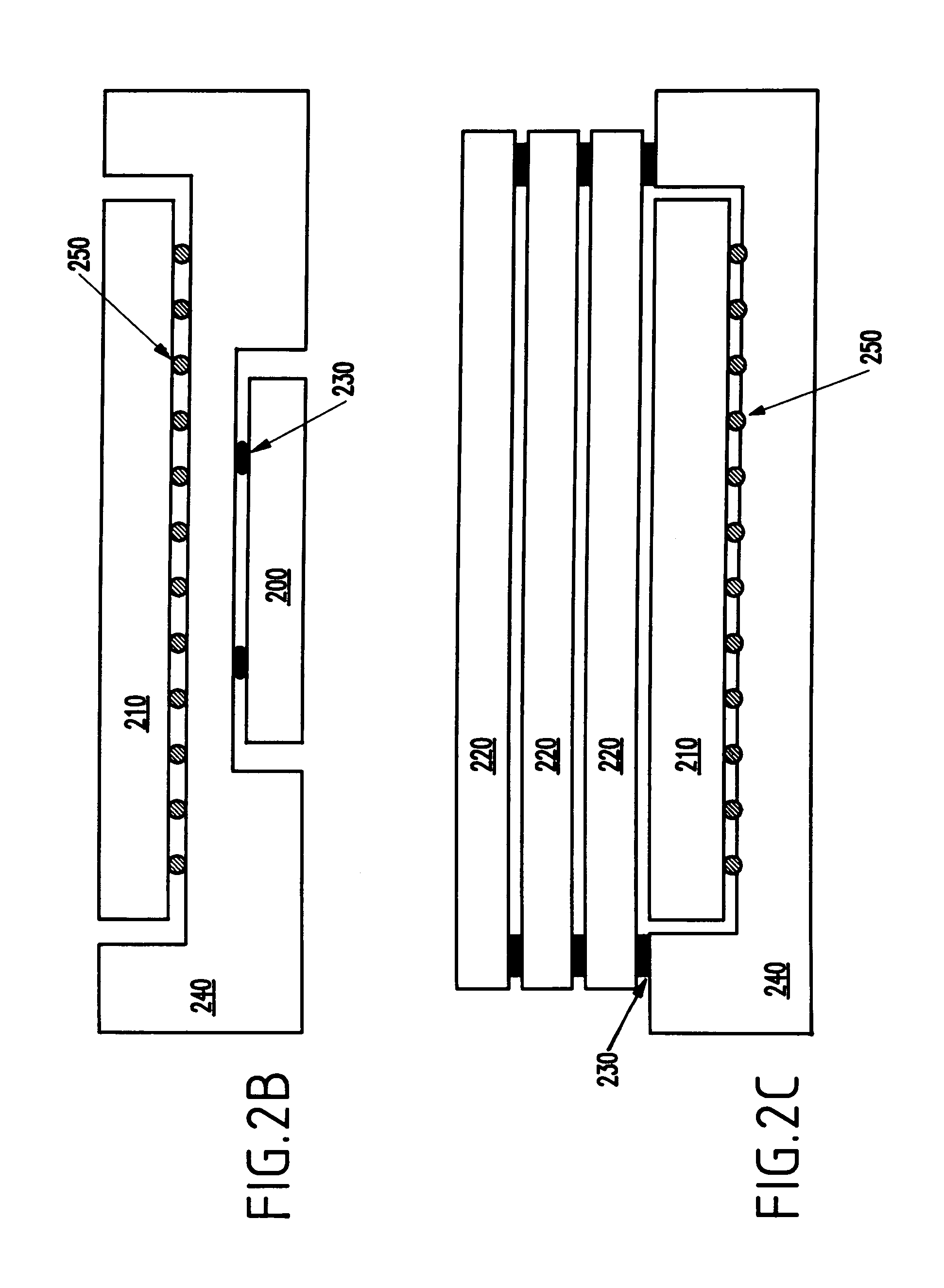System level device for battery and integrated circuit integration
a battery and integrated circuit technology, applied in the field of system-level power source integration, can solve the problems of large power supply to maintain the quality of service, large cost, and large complexity of current battery management systems
- Summary
- Abstract
- Description
- Claims
- Application Information
AI Technical Summary
Benefits of technology
Problems solved by technology
Method used
Image
Examples
first embodiment
[0030]Referring now to the drawings, and more particularly to FIGS. 1 through 4, there are shown preferred embodiments of the method and structures according to the present invention. In FIG. 1, a schematic diagram of an integrated solid-state battery and chip packaging system 100 is illustrated with a solid-state battery 102 shown on a finished chip 101. The solid-state battery chip (e.g., capacitor, etc.) 102 is soldered to the underside of a chip further comprising an integrated circuit 101. The battery electrodes 103 can be soldered to the chip through a micro-C4 or similar technique to the chip voltage sources. Then the entire stacked chips can be placed into a standard package 104. Since the battery chip 102 is placed in the middle of the chip 101, this structure is more ideal for the chip having low number of input and output (I / O) pins 103 and does not require a full chip size battery. To add extra power capability, a larger size battery is usually required.
[0031]The advanta...
fifth embodiment
[0036]In FIG. 3, a fifth embodiment is shown, wherein a sub-system 300 is disclosed with several chips 320 packaged in a multi-chip-module (MCM) 340. The chips 320 are powered by a large full MCM size solid-state battery 310. The battery 310 becomes the power source for the entire system. The sub-system 300 may content several chips 320 as part of the complete system 300. Moreover, the packaging can be a MCM type of structure. A larger size battery is preferably used, but is not necessary. Rather, the choice depends on the type of chips in this system and the power consumption of these chips. This embodiment constitutes the preferred embodiment of the present invention. In a conventional system, the MCM, which contains several chips to form a sub-system, must be packaged to a board to get power. Thus, in the conventional systems, the benefit of data and signal integration is not available to the supply lines.
[0037]Therefore, in the preferred embodiment, the size of the system is red...
PUM
| Property | Measurement | Unit |
|---|---|---|
| structure | aaaaa | aaaaa |
| electrical energy density | aaaaa | aaaaa |
| voltage | aaaaa | aaaaa |
Abstract
Description
Claims
Application Information
 Login to View More
Login to View More - R&D
- Intellectual Property
- Life Sciences
- Materials
- Tech Scout
- Unparalleled Data Quality
- Higher Quality Content
- 60% Fewer Hallucinations
Browse by: Latest US Patents, China's latest patents, Technical Efficacy Thesaurus, Application Domain, Technology Topic, Popular Technical Reports.
© 2025 PatSnap. All rights reserved.Legal|Privacy policy|Modern Slavery Act Transparency Statement|Sitemap|About US| Contact US: help@patsnap.com



